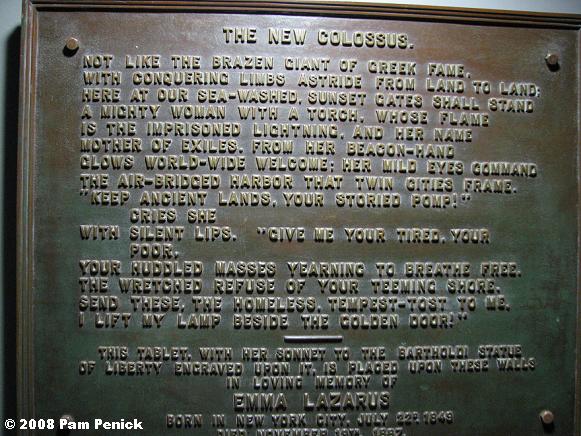
The New Colossus
Not like the brazen giant of Greek fame,
With conquering limbs astride from land to land;
Here at our sea-washed, sunset gates shall stand
A mighty woman with a torch, whose flame
Is the imprisoned lightning, and her name
Mother of Exiles. From her beacon-hand
Glows world-wide welcome; her mild eyes command
The air-bridged harbor that twin cities frame.
"Keep ancient lands, your storied pomp!" cries she
With silent lips. "Give me your tired, your poor,
Your huddled masses yearning to breathe free,
The wretched refuse of your teeming shore.
Send these, the homeless, tempest-tost to me,
I lift my lamp beside the golden door!"
History of Liberty State
Park
On the New York Harbor, less than 2,000 feet
from the Statue of Liberty, Liberty State Park
has served a vital role in the development of
New Jersey's metropolitan region and the
history of the nation.
During the 19th and early 20th centuries the
area that is now Liberty State Park was a major
waterfront industrial area with an extensive
freight and passenger transportation network.
This network became the lifeline of New York
City and the harbor area. The heart of this
transportation network was the Central Railroad
of New Jersey Terminal (CRRNJ), located in the
northern portion of the park. The CRRNJ
Terminal stands with the Statue of Liberty and
Ellis Island to unfold one of this nation's most
dramatic stories: the immigration of northern,
southern, and eastern Europeans into the
United States. After being greeted by the
Statue of Liberty and processed at Ellis Island,
these immigrants purchased tickets and boarded
trains, at the CRRNJ Terminal, that took them
to their new homes throughout the United States.
The Terminal served these immigrants as the
gateway to the realization of their hopes and
dreams of a new life in America.
Today, Liberty State Park continues to serve a
vital role in the New York Harbor area. As the
railroads and industry declined, the land was
abandoned and became a desolate dump site.
With the development of Liberty State Park
came a renaissance of the waterfront. Land
with decaying buildings, overgrown tracks
and piles of debris was transformed into a
modern urban state park. The park was
formerly opened on Flag Day, June 14, 1976,
as New Jersey's bicentennial gift to the nation.
Most of this 1,122 acre park is open space
with approximately 300 acres developed for
public recreation
Nenhum comentário:
Postar um comentário